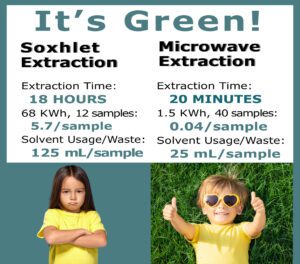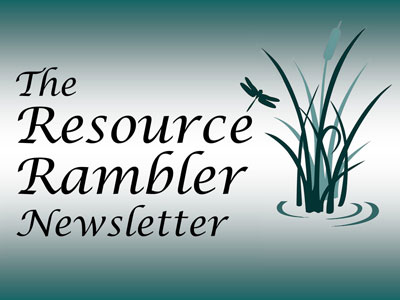Alternative Methods for PCBs
For years, EPA Region 1 has required that Soxhlet extraction (EPA Method 3540C) be performed for PCB (polychlorinated biphenyl) analysis, as per the TSCA regulations. However, most people involved in the cleanup and disposal of PCBs don’t realize that published, approved, less expensive and “greener” methods are available. Anyone who deals with PCBs on their job sites should be aware that the Soxhlet method for extraction is not the only method, and certainly not the best method, that can effectively extract PCB material from samples.
Although not specifically mentioned in TCSA (the Toxic Substances Control Act), the EPA has approved other methods that are more efficient in terms of time, labor, materials, energy and waste. The problem is that in order to get EPA approval to use an alternate method for extraction, an extensive study has been required. The study must be initiated on a project-specific basis by the contractor hiring the laboratory. Due to tight deadlines and fear of the unknown, contractors generally just ask the laboratory to perform the (expensive, cumbersome and less green) Soxhlet extraction.
ARA has found that performing these studies for our clients has been well worth the time and effort, as the benefits to our environment and our clients are many, including reduced waste, reduced energy, reduced turn around time (TAT), reduced mobilization on site, and millions of dollars in savings for our clients. If you’d like to hear more about saving time and money by using microwave extraction for your PCB samples, give us a call. Let’s keep the conversation going!

The ABCs of PCBs
Speaking of PCBs, here are some interesting details you may not know about this man-made chemical:
• In 1865, the first PCB-like chemical was discovered as a byproduct of coal tar.
• In 1881, German chemists synthesized PCB in a lab.
• PCBs were very appealing to manufacturers because of low vapor pressures, burn resistance, insulation capability, and low cost.
• Uses included: coolant fluids, plasticizers, carbonless copy paper, solvents, waterproofing, fluorescent light ballasts, paints, caulking, rubber, mastics / adhesives and more.
• PCBs were marketed under the trade name Aroclor from 1930-1977 by Monsanto Company in Alabama & Illinois.
• For decades, PCBs were released into the environment during their production, use, storage, and disposal.
• Most humans now have low levels of PCBs in their bodies.
• Monsanto became aware of PCBs prevalence in the environment in the 1960s, yet continued to produce them.
• According to Monsanto, in the 1970s the US Government encouraged the continued production of PCBs for electrical safety reasons, until a suitable replacement could be developed. (source: monsanto.com)
• TSCA took effect in 1976, but this law did not limit the use of PCB containing products already manufactured.
• Despite regulations, intentional and unintentional dumping and mishandling of PCBs still occurs today.
• Buildings constructed or renovated between the 1930s and 1970s are very likely to contain materials with PCBs.
• PCBs do not readily break down in the environment and can be carried long distances in air and water.
• Because PCBs bioaccumulate in animals, the FDA requires eggs, milk / dairy products, fish, shellfish, poultry, red meat and some baby foods contain no more than 0.2- 3 parts per million (ppm) in food.
• PCB exposure at high levels has been linked to a variety of health issues, from skin conditions to organ/system damage, and has been labeled a “probable carcinogen.
Got Vermiculite?
You may have been hearing chatter about another environmental buzzword lately: “vermiculite,” which has unfairly become synonymous with the word “asbestos.” While both are naturally occurring minerals, unlike asbestos, in its purest state, vermiculite is not considered harmful. Well, things got complicated in a mine out West, Zonolite was born, and the rest is history.
From 1919 to 1990, 70% of all vermiculite sold in the US came from a mine in Libby, Montana, and was used in the majority of vermiculite insulation marketed under the name Zonolite. It was later discovered that the Libby mine also contained asbestos, and so folks today who have vermiculite insulation are advised to treat it as asbestos. Those working on buildings who encounter vermiculite are mandated by the EPA to manage it as though it is asbestos, and can be fined if they do not follow protocol.
This is what we want our customers to know about vermiculite:
• If your insulation is known to contain vermiculite, you must assume it contains asbestos.
• Do not disturb! If you don’t have to enter or disrupt the area, then don’t. Asbestos is most harmful when airborne.
• Coming in and out of the area, opening closing doors, any type of air movement can disturb asbestos particles.
• If you are doing a renovation or have to disrupt the area in any way, call a certified company to perform an assessment or remediation.
• Spread the word about vermiculite insulation to your friends & neighbors (Ignorance is not bliss, in fact it can be very dangerous).
As always, if you have any questions, give us a call. To read more about ARA’s asbestos services, click here.
Happy Holidays from ARA!
Wishing you a TREE-mendous Holiday Season from Your Friends at ARA!
FYI, ARA’s Holiday Hours:
Monday 12/26- CLOSED
Tuesday 12/27- CLOSED
Friday 12/30- Closing @NOON
Monday 1/2- CLOSED
Please keep your sampling plan and expiration dates in mind during these revised holiday hours. Thank you!
The Resource Rambler Newsletter is brought to you by your friends at Absolute Resource Associates. ©

